During his 20-year search for the meaning of home, a native of Athens becomes an observer of what happens to cities around the Mediterranean and in the Middle East, as chaos destroys the familiar and millions are forced to flee. The inveterate writer, photographer and documentarian finds that “home is what you carry within yourself.”
Iason Athanasiadis
One bright lunchtime in September 2001, I walked into the reception area at the London TV production house where I worked to behold smoke pouring out of a New York skyscraper on a TV monitor. I had just graduated in Arabic and Modern Middle Eastern Studies from Oxford University, during which degree I spent several intriguing months living in the ancient citadels of Sanaa, Aleppo and Damascus. Now it looked like the region had just paid a visit to the capital of capitalism.
Watching a news event resembling a Hollywood disaster movie unfold, I wondered whether its momentousness was such that it could somehow imprint itself upon the balmy immaculateness of that late London summer. From a flatshare in West London, I’d been plotting a move to the Middle East to realize a flighty dream of becoming an old-style correspondent, the type that lived in a spare apartment facing the Mediterranean filled with the bustle of traffic and cafés, read literature till lunchtime before heading out for drinks with sources, and wrote at night. Of course, the communications revolution had already deflated the long uninterrupted periods in which such detached romanticisms could flower, and now here came 9/11 to give the final blow to the world we’d known, heretofore to be reductively known as just the 20th century.
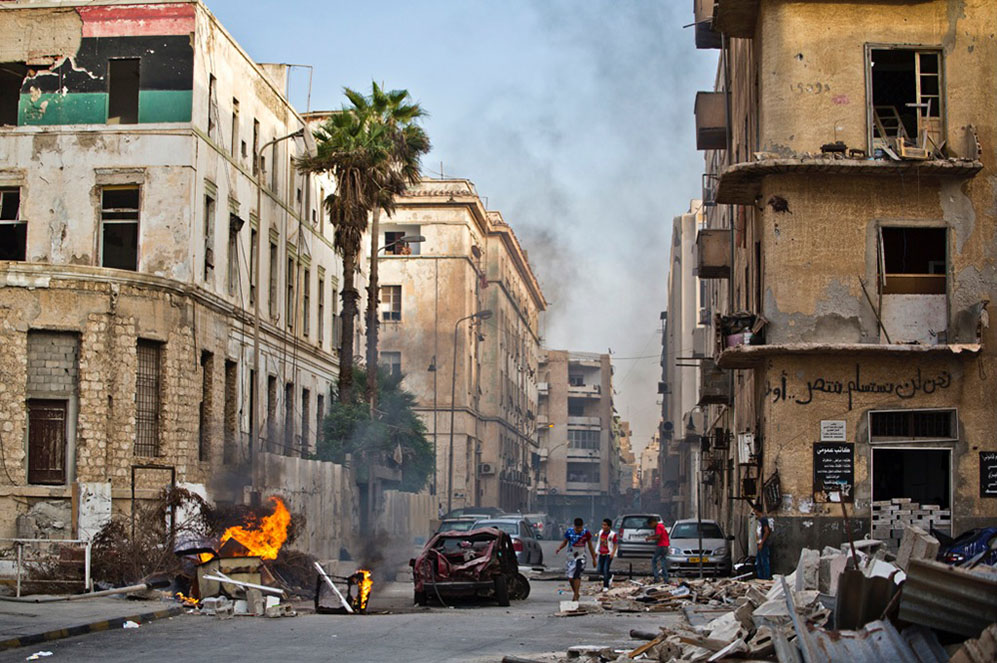
Athens-Aleppo
Growing up in 1980s Athens was an experience composed of traffic, smog and tall cigarette advertising boards erected on new concrete apartments blocking out views of the Acropolis. My academic parents brought me up in a suburb-under-construction abutting Athens University. The unmuzzled post-junta press dominated the city’s kiosques and cafés, and both the lurid material and feverish city fed my childish imagination. I sketched out imaginary newspapers on blank pieces of A4 and built Lego cities combining medieval, contemporary and futuristic quarters: both were harbingers of later passions involving cities and journalism.
When my father moved to Aleppo for a six-month period in the mid-‘90s, I had the opportunity to see the Levant for the first time. He took me around Beirut, Damascus, and the ruins of Baalbek and Palmyra. These places had something familiar about them, a common Mediterranean sensibility. I found that some social codes I used in Athens were common to Beirut, smoothing interactions and opening communication even when we lacked a common language. When the 1996 Israeli invasion catapulted the same locations onto TV screens, this time as backdrops to standups by journalists, I decided that a degree in Arabic and Modern Middle East Studies was the sincerest path to a life covering the region.
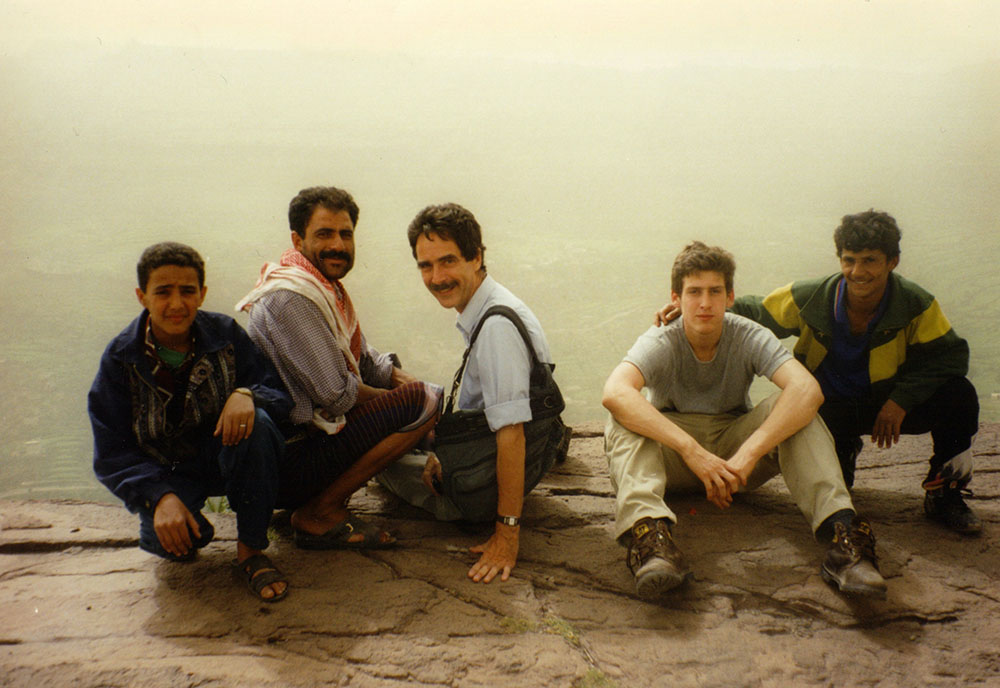
Five years later, that London autumn, I packed up and moved to Cairo to work for al-Ahram Weekly, the English edition of the Arab world’s oldest newspaper. On TV, America’s traumatized media public clamored for Afghanistan to be invaded, and a whole new generation of soldiers, spies, think-tankers and businessmen were preparing to replay a contemporary version of the Great Game: set up consultancies, bid for contracts, open obtuse dealings in hypermodern Gulf cities, and subsequently shed crocodile tears when the whole house of cards collapsed, unleashing a refugee tsunami. It was the prelude to another battering of the region we call the Middle East.
Cairo-Paris-Doha
When I moved to Cairo in 2001, it no longer led the Arab world, although its geriatric US-aligned dictatorship was still fairly typical of the state of play to have settled since the end of the Cold War. State repression was mostly restricted to the Muslim Brotherhood, human rights activists and the occasional homosexual. The food shortages, massive inflation and rampant corruption that fueled the Arab Spring were still in the future, and the regime was just awaking to the indecipherable antics of a media dilletante sponsored by an upstart, cash-flushed Gulf emirate — Al Jazeera.
Cairo’s astounding reality of millions somehow coexisting on dusty streets, ancient apartments and a parallel world of rooftops was what I took away when I moved on to Paris to work on a documentary. The culturally and linguistically isolated months that followed in Paris augmented my appreciation of the city, and then it was onwards to Qatar where Al Jazeera was opening an English-language website just in time for the US invasion of Iraq.
The new century had ushered in an explosive challenging of the mainstream Anglosaxon media. Al Jazeera’s strengths were its lavish state funding and the specialized local knowledge and connections of its journalists. Although later they were instrumentalized into promoting regime change narratives that suited US, Turkish and Muslim Brotherhood agendas, in the ‘00s at least they managed to expand the horizons of coverage in a censorship-bound region. Al Jazeera was so incredibly unusual that world leaders queued up to simultaneously scrutinize and threaten it: Egypt’s Mubarak wondered at “all this noise coming out of this matchbox” before banning its office in Cairo, and the Americans hinted at a little bombing of its Doha headquarters before opting instead to kill Tareq Ayyoub, its Baghdad correspondent through a targeted airstrike. [Ayyoub would not be the last Al Jazeera journalist killed by a hostile state. —ED]
On the first day of the US occupation of Baghdad, in March 2003, a Marine performed an eloquent statement of intent when he wrapped a Stars-n-Stripes around the face of a statue of Saddam in the process of being toppled. There was widespread revulsion in the Al Jazeera newsroom at how telling of the project’s intent that single spontaneous gesture was. A few months after the invasion and the first stirrings of the insurgency, I left Qatar. Doha was the first time I had lived in a city so new it was mostly yet unbuilt. I recall it as a homely succession of tidy residential compounds, haphazard malls stuffed with expats, 4* hotels staffed by icily on-message Thai receptionists, US C130s carrying materiel to the warzone overflying the Doha coastline, puzzled motorists staring at me for walking instead of driving, and silent night shifts in a Jazeera newsroom dotted with bright monitors beaming in Iraq’s horrors. The only respite was a little shack out at the end of the harbor, serving fish and local music. Even so, most colleagues preferred the insulated comforts of the Four Seasons.
Athens-Tehran-Istanbul-Kabul
In Doha, I had just witnessed a futuristic slave society powered by globalization and capitalism, functioning amid gleaming skyscrapers and luxuries imported at reckless energy imprints: Pakistani builders and Filipino salesgirls serving a British, American and Arab upper class that lavished its disposable income on Italian furniture, French champagne and American SUVs.
After Doha’s techno-marvels, Athens seemed quaint and sleepily vulnerable to the impeding changes. Sitting in a little park on a summer evening in 2003, I watched romantic couples crowding the tables: relaxed, solvent and entirely oblivious of the financial meteorite hurtling towards them. Greece was pumped high on loans, about to host the 2004 Olympics, and even considered something of a regional power, at least in the Balkans. I recalled Iraqi and Egyptian old-timers describing feeling very much at home during regular visits to Athens in the ‘80s; now, the city had developed into something altogether more European and western. Not only were they not sure how this made them feel, but strict new Schengen visas rules had even curtailed their access to the city. Suddenly, Athens was inaccessible to Middle Easterners.
Athenians, for their part, were proud of the gleaming new infrastructure bought with the Olympic money: highways, a new airport, and some stadiums to be animated for a couple of weeks and then forgotten. The Olympics were followed by four years of sloping demise, and then an accelerating crisis that would project Greece’s angry rioters onto the global scene and roil world markets.
After the Olympics, I moved to Tehran, to absorb a new language and culture. With American occupations active in Iran’s eastern neighbor Afghanistan and Iraq to its west, and large US bases all along the emirates of its southern shore on the Persian Gulf, it was clear that the post-9/11 American move into the region had Iran surrounded. Although the country was continent-sized and entrancing, I hardly encountered any foreigners on my travels aside from large populations of displaced Afghans, and Shiites from Iraq on pilgrimage.
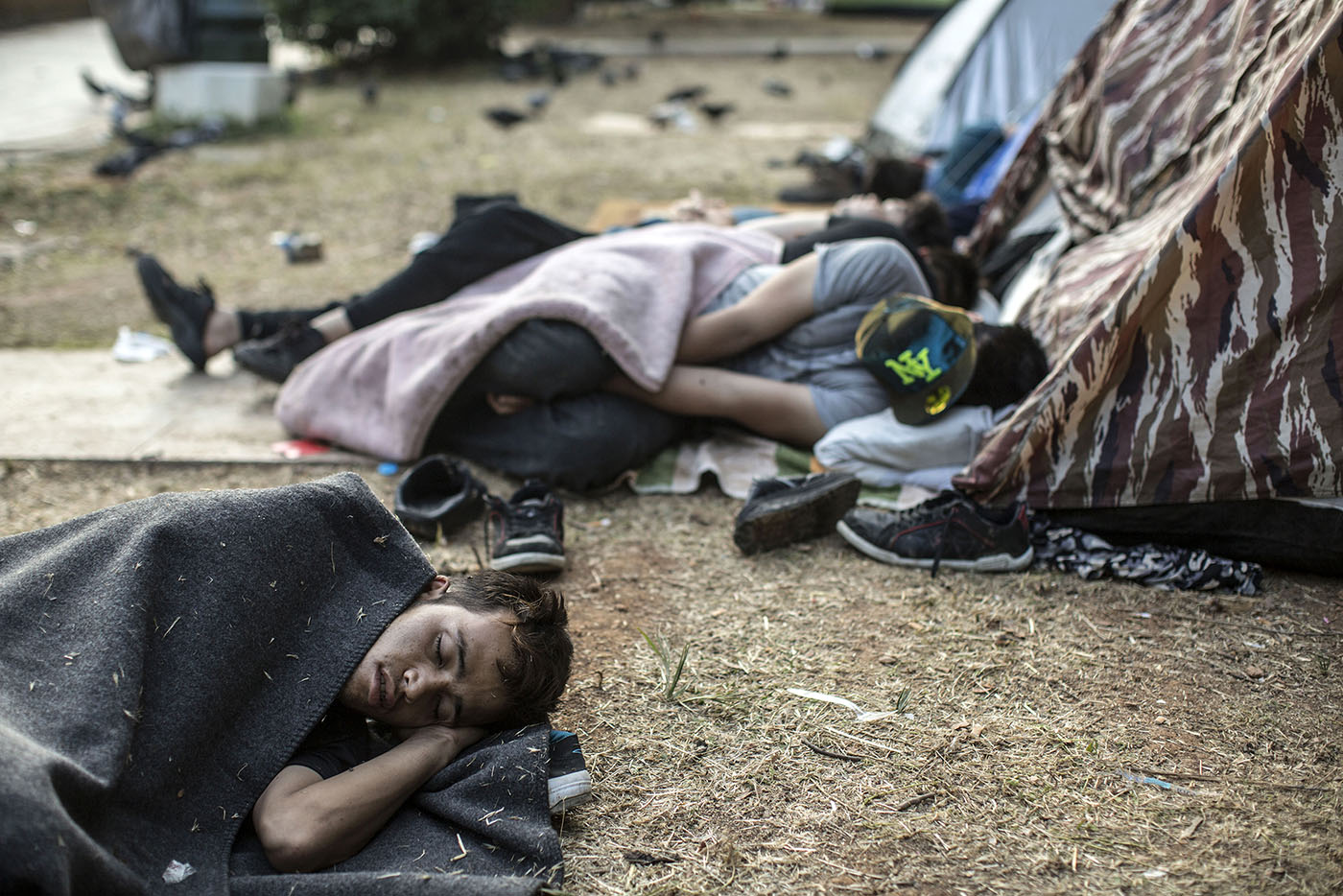
In 2009, I returned to Iran to cover presidential elections that spun out of control after security forces killed several protesters challenging the result. The debacle prompted activists and journalists to flee the country, and I interviewed many of them in subsequent years in Turkey. It was all a preamble to the Arab Spring and in a way these Iranians were precursors of the massive population movements that would follow in the mid-2010s.
In 2010, I joined two Iranian photojournalist friends in Kabul. Working out of a small flat, we roamed the country’s cities, refugee camps and graveyards, uncovering a traumatized society’s stories. The countryside insurgency against the American occupation had pushed large waves of people to Kabul, which was experiencing a building boom unseen since rival militias had destroyed the city during the post-Soviet, pre-Taliban civil war. Hundreds of families survived on empty plots of land, seasonally drowned in snow and dust, before either putting down roots in Kabul, or heading to Pakistan or Europe. Migration flows through Greece had picked up by the late 2000s and increasingly, telling people I was from there elicited less admiring declarations of familiarity with Aflatun or Aristu over complaints of Greek police brutality.
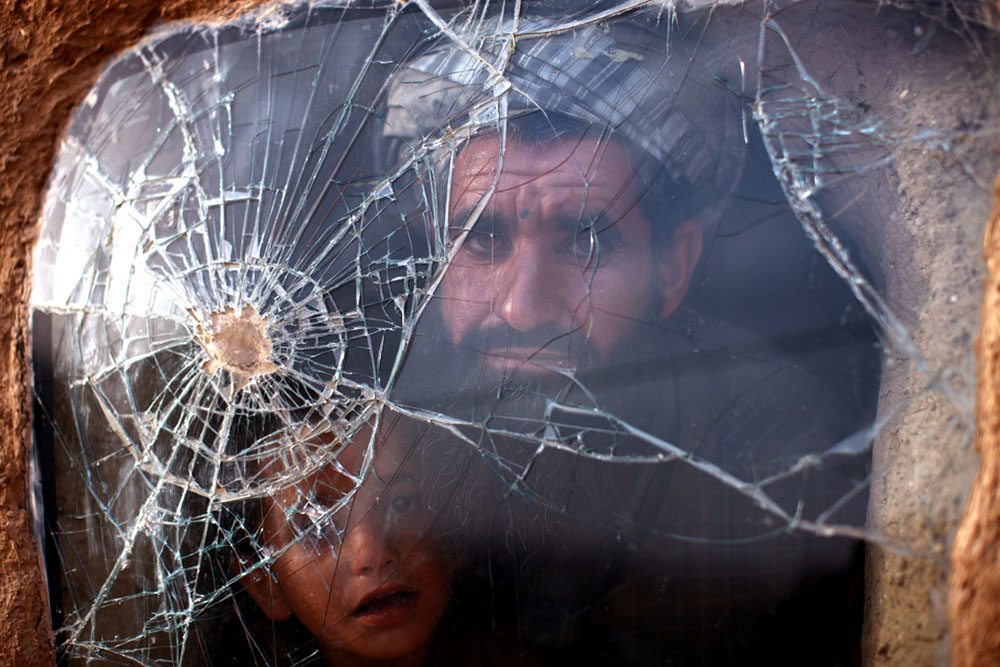
Benghazi-Tunis-Erbil
The next year, an Australian whistleblower named Julian Assange performed a service to journalism by leaking years of US embassy cables, providing an insider view of how the State Department sees the world. But the western mainstream media vilified him, and systematic security service hounding resulted in him being made an example to other potential whistleblowers.
The 2011 Arab uprisings began on the same month as Wikileaks, and I travelled to Cairo, Tunis and Benghazi. It was curious to see these cities at their most tumultuous moments, as they awoke from yearslong slumber. In Avenue Ramses or Courthouse Square or Avenue Bourguiba, large crowds (and the occasional tank) displaced that great 20th century hijacker of cities, car traffic, refocusing the eye on buildings and street layouts. But the Arab Spring was something of a death knell for these cities’ decrepit belle epoque downtowns, as owners took advantage of the chaos to demolish and rebuild at whim. The post-revolutionary reality also deflated the excited crowds and soon many of the demonstrators who survived the conflicts engendered by the uprisings found themselves living in Berlin, Naples or Stockholm.
Covering migration while being simultaneously a local and an outsider was harder because the cognitive dissonance of being a local was added to having to understand multiple perspectives that could be equally valid even while clashing.
By this point I had joined the UN as a press officer, first in Kabul and then the Libyan capital of Tripoli. I spent years interviewing people displaced, often multiple times, in camps around Libya, Afghanistan, Iraq, Jordan, Turkey and Lebanon. My time with the UN familiarized me with all the silent, forgotten migration disasters, which fester long after the mainstream media has done its week or so of coverage and moved on to somewhere else. It was the so-called aftermath phase, lasting generations in some cases, where hope of return has yet to die out but refugeedom is already baked into the psyche, especially when the host country refuses to integrate the new populations.
In 2014, hundreds of thousands of people fled to northern Iraq’s autonomous Kurdish areas after ISIS took over Mosul. The Kurdistan region had witnessed a building boom in the years since the US invasion of Iraq, and Turkish construction companies were busy transforming historical cities like Erbil and Suleimaniyeh into arenas for the cheapest and shoddiest materials they had available. Thousands of refugees ended up occupying half-built apartment towers in peripheral cities like Dohuk and Zakho, creating vertical shantytowns. But the worst, most desperate conditions were to be found in refugee camps set up just outside the Kurdish security cordon, in places like Kirkuk and Baqouba, where thousands of desperate people clustered in knee-high mud behind concertina wires. They would likely be executed if they returned, but could not move forward because the Kurds suspected them of containing possible ISIS infiltrators, condemning them to an interminable wait in a no-man’s land.
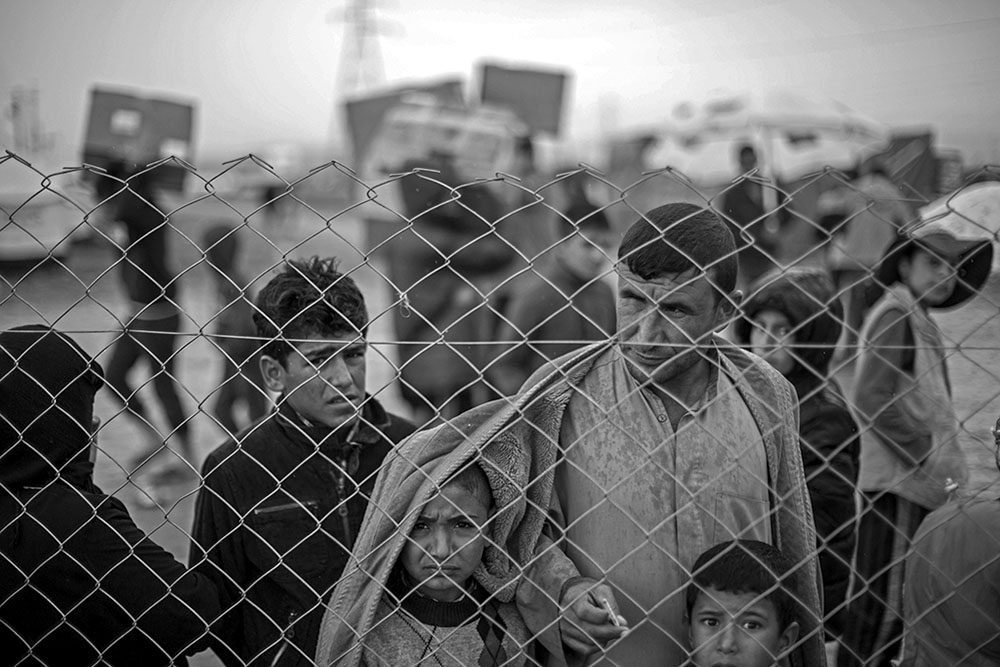
Full circle to Athens
In 2015, Greece became a corridor into Europe when Germany decided to accept an unlimited number of refugees. The most direct route passed through Greek beaches, riversides and downtowns. But initial hospitality flagged as towns filled with makeshift camps processed a constant human flow. The leftist Syriza government followed half-hearted integration and an open borders policy of sorts, but their right-wing successors built a wall on the land borders with Turkey, employed migrants in deniable militias to push newcomers back over the border, and engaged in maritime pushbacks so violent that even the EU’s border protection agency debated withdrawing its operations.
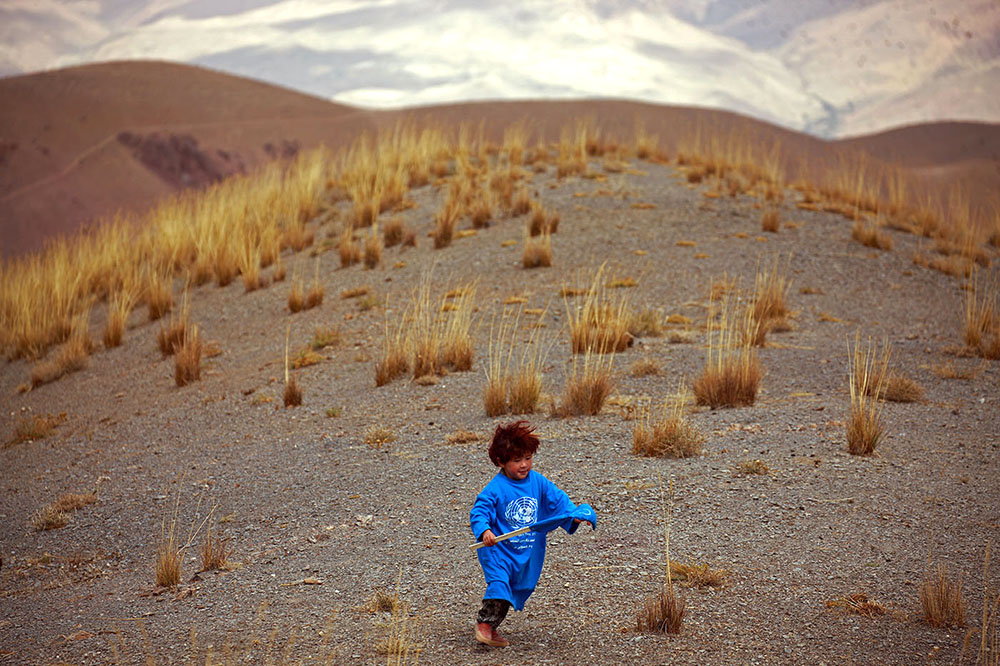
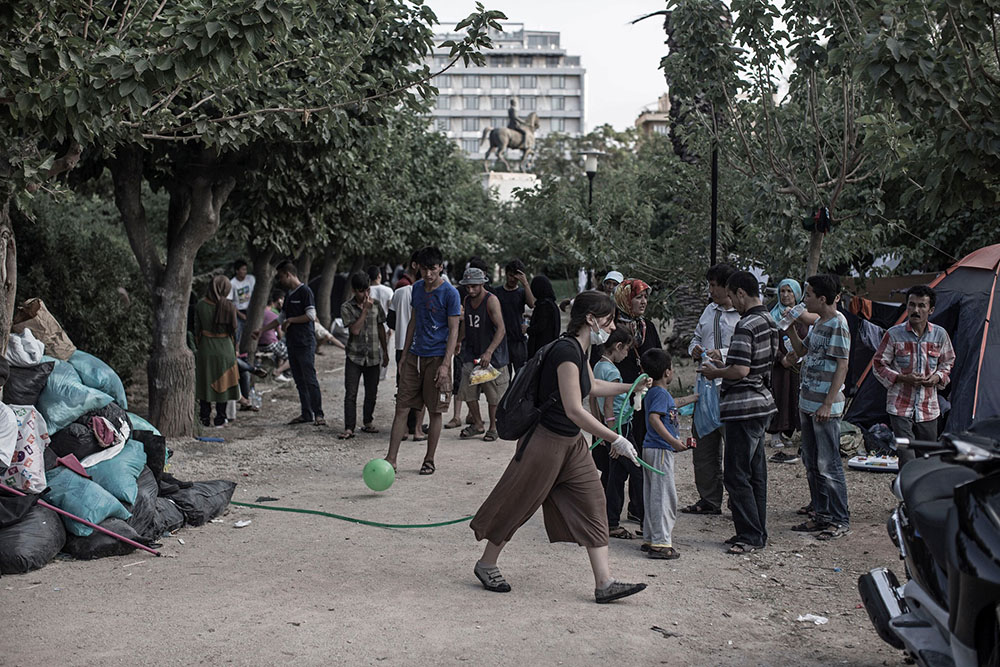
Covering migration while being simultaneously a local and an outsider was harder because the cognitive dissonance of being a local was added to having to understand multiple perspectives that could be equally valid even while clashing. For years I had been following the new lives built by the Iranian refugees I’d met in 2009, and it slowly dawned on me that I was recurringly covering what to most people was a once-in-a-lifetime experience. As I listened to languages and accents that I’d last heard “over there, in the Middle East,” it occurred to me that many of the people now here were the same as those whose hospitality I’d received in Sanaa, Deraa, Kufra, Alexandria, Herat and a miscellany of elsewheres.
These were people who were neither conventionally nice nor had the polished façade of today’s globalized metropolitans. But they were secure in their identity and place. Their upbringing had provided them with ethics and values, alongside biases, which were the products of non-change and long centuries of repeated behaviors. Whereas at that time they stood for the status quo, these same behaviors, in a world that changed without notifying them, made them appear vulnerable, even slightly pathetic.
By the time I returned to Athens in 2018, the instability launched in the aftermath of 9/11 had radically altered many of the cities I had lived in. Large parts of Aleppo and Benghazi were now just rubble, but elsewhere, too, the sudden unavailability of water and food, insecurity and the total devaluation of local currencies had strangled the potential for life. The knock-on effect on the populations was to make them look for alternatives. But the walls were closing in for itinerants without money in a world lurching from economic crisis to pandemic and now global conflict.
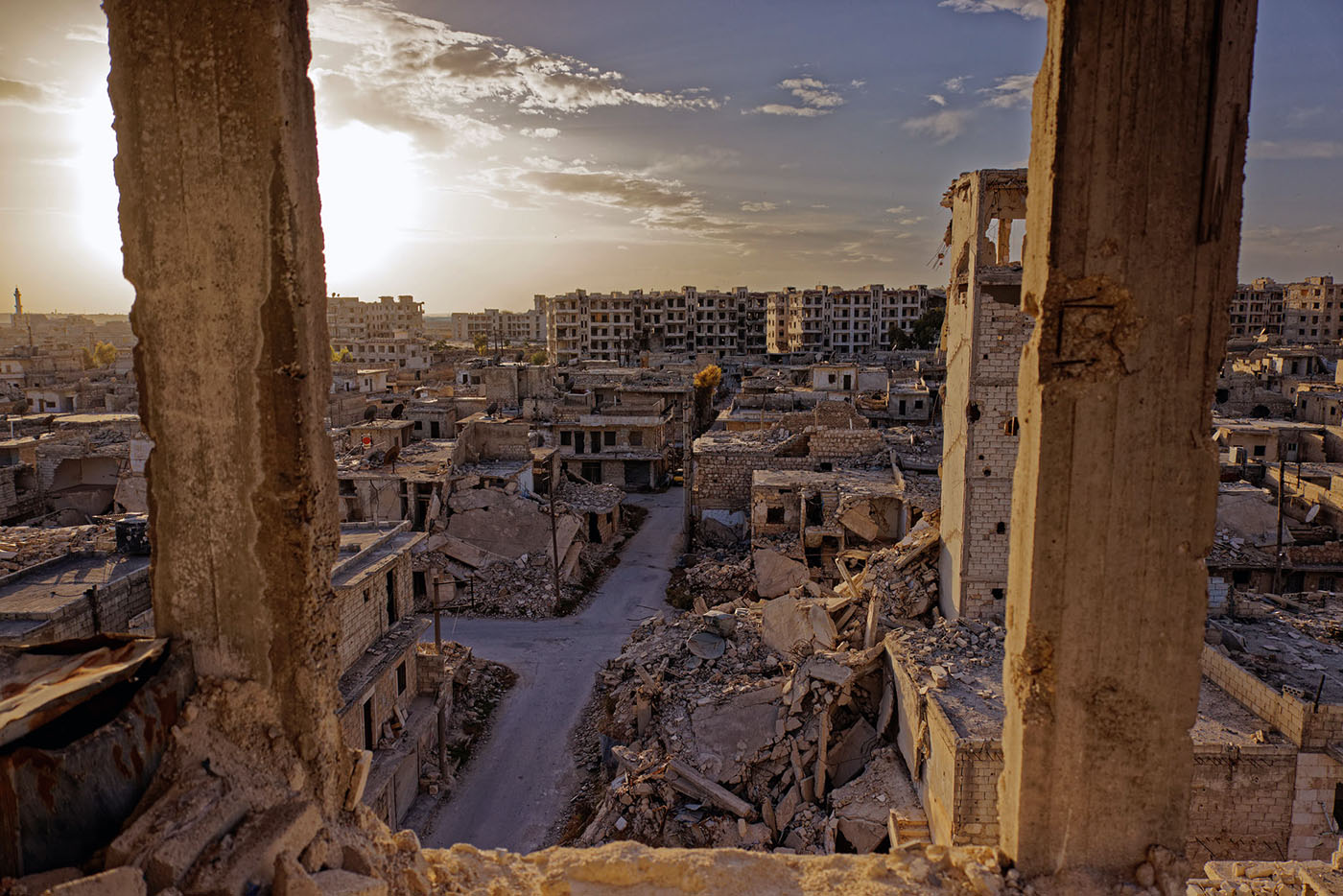
Back to the city
Maybe I never ended up becoming the romantic correspondent I daydreamed of before 2001, but my slalom through the great urban theatrical stages of the region taught me something more useful: locality is irreplaceable, and we live in an era of such chaos that any of us can become a refugee in the twinkling of an eyelid. I adapted these lessons to my coverage and began to work on hyperlocal groups effecting social change, especially in cities in the era of climate change. Whether writing about a neighborhood’s fight to stop some of its last trees being cut for a metro project, or making a short film about a group of architects reviving traditional building techniques, my work now seeks to cut through the insufferable political and consumer hypocrisy surrounding us and show there are alternatives to the gospel-preachers of the mantra that there is no alternative to our present reality.
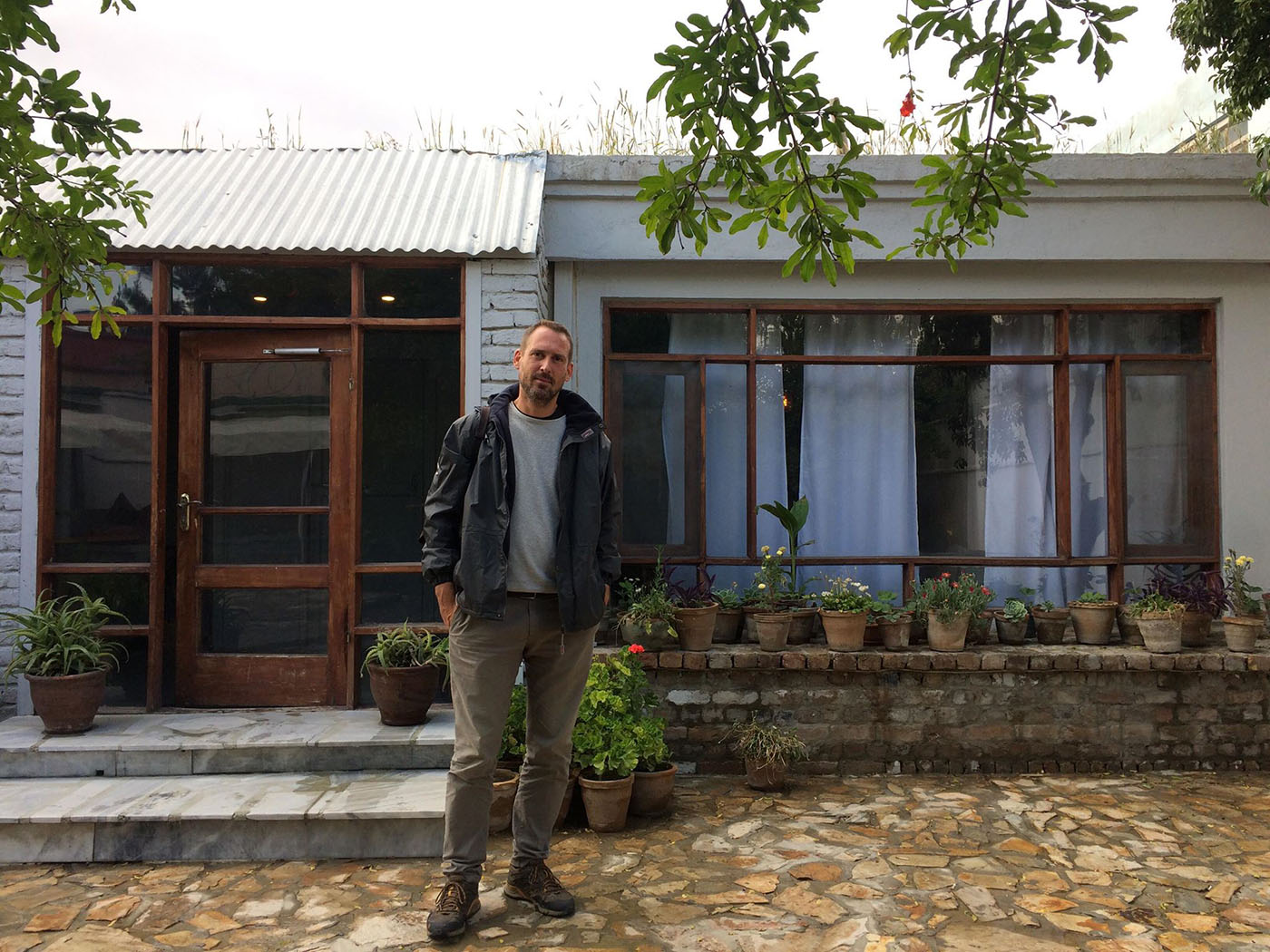
In the past 40 years, Athens has gone from a smoggy East-West mongrel anxiously replacing its neoclassical architecture with multistorey apartment buildings to a city with new districts swarming over former fields and forests, better transport infrastructure and a real estate sector too expensive for its inhabitants but tantalizingly cheap for First Worlders. Millions of tourists, digital nomads and pensioners now line up to visit the Parthenon, and perhaps also to buy a pied-à-terre. I was back in a city I hardly recognized which had shed its localness for a global sheen, and was attracting people escaping conflicts elsewhere even while itself being on the margin of several conflicts. It was a good place, I decided, for a journalist. To paraphrase Constantin Cavafy’s “The City,” it seemed that in my fifth decade I no longer seek to “go to another country, another shore, find another city better than this one,” but aspire to “walk the same streets, grow old in the same neighborhoods, turn gray in these same houses.”

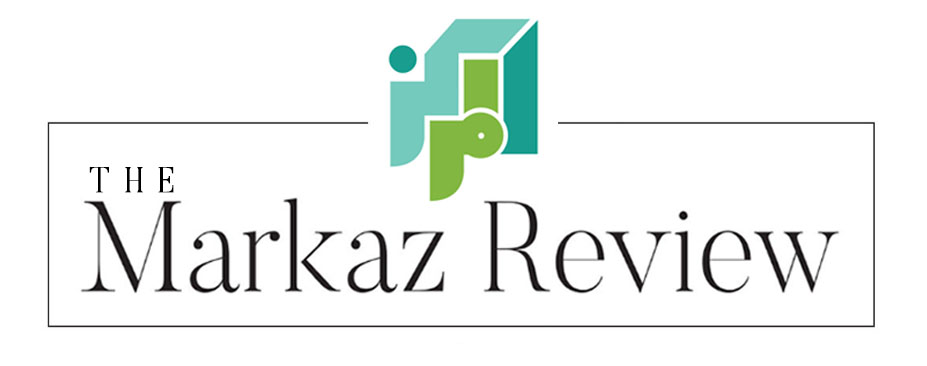

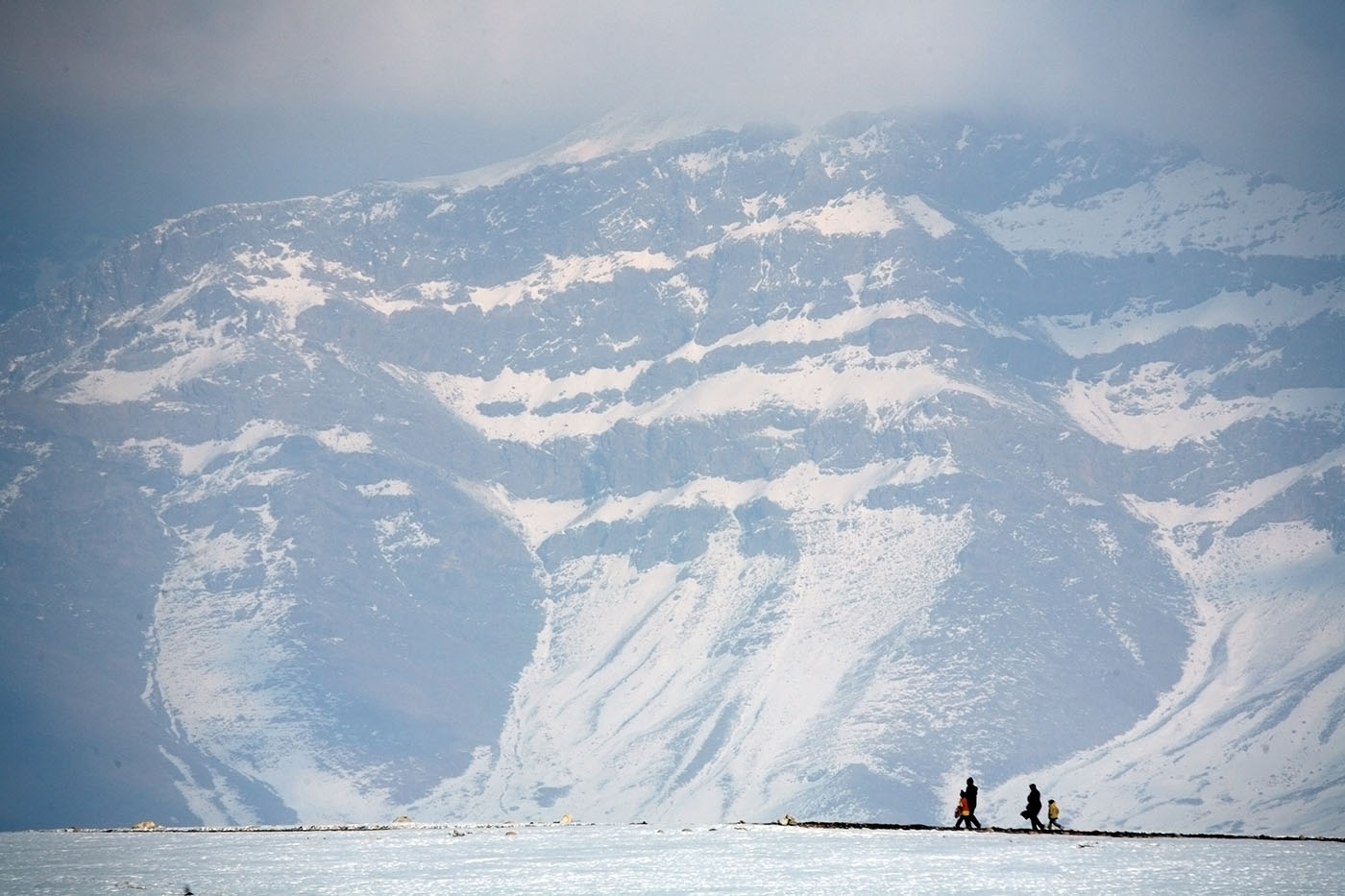

Switchbacking across the planet, Iason comes full circle. Not exactly a homecoming in the traditional sense, but a return to “home” nonetheless, I am inspired by the ways he’s found to meaningfully engage his hard-earned multiperspectivity, globalist mindset, and journalistic spirit in the “old neighborhoods.” Bravo!
It captures the interplay between historical challenges and contemporary realities, illustrating how adversity can forge strength and a sense of purpose. The blend of cultural, social, and political reflections offers a nuanced understanding of Athens as more than just a city but as a symbol of endurance and transformation.
The discussion about how Athens continues to balance its ancient heritage with the pressures of modernization is particularly compelling. It invites readers to reflect on how a city’s identity evolves while retaining its core values. The emphasis on community resilience is an inspiring takeaway, showcasing how collective effort and shared purpose can overcome even the most daunting challenges.
One thought to expand upon is how Athens’ journey mirrors broader global trends. Exploring parallels with other cities that have faced similar crossroads could enrich the narrative. Additionally, examining how Athens uses art, architecture, and public spaces to foster unity amid diversity would add depth. The story of modern Athens serves as a reminder of the enduring power of adaptability and community spirit.